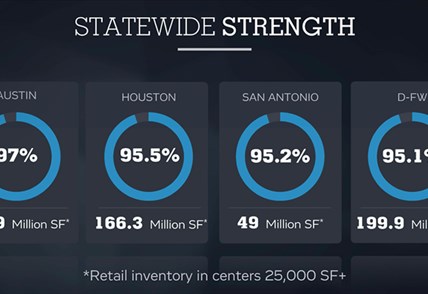Weitzman recently released its mid-year 2018 retail report for Austin, which continues to be a very healthy. Connect Media discussed the trends with Gabe Sanchez, who is senior vice president with Weitzman’s Austin office. Sanchez’s focus is on tenant representation and project leasing.
Q. How does the Austin market look right now for retail?
A. Our retail space right now is essentially full, with an occupancy rate of 96.1%. In terms of new space, we’re on track to add about 700,000 square feet in 2018, which of course is extremely conservative construction. New space is coming online significantly pre-leased, and it’s anchored by entertainment, food, fitness and specialty concepts, all of which are proving internet-resistant. Currently, Austin’s unemployment rate is under 3%, and we’ve added more than 400,000 residents since 2010. That creates a lot of healthy demand for goods and services, so we expect a strong retail market for the foreseeable future.
Q. Are you surprised that Austin again ranks as Texas’ healthiest major-metro retail market?
A. Not really. We see the formula for the current market being a strong economy, plus healthy demand, plus limited construction means higher occupancy. Even as we see closings from legacy retailers Toys “R” Us and Sears, we’re confident that those spaces will find new tenancy sooner rather than later. In a market with such limited space, it’s not unusual to get a letter of intent from a new tenant soon after an older tenant announces it is closing. We’re seeing vacant anchor space often redeveloped for multi-tenant or mixed-use space, especially in core submarkets with density and barriers to entry.
Q. How long do you expect the current cycle to last?
A. The answer, of course, is that we can’t say for sure. But even the most pessimistic economists and market watchers don’t see anything disrupting this healthy cycle for the next several years at the earliest. If we were overbuilding with a lot of speculative retail space and it looked like demand might soften, I’d be worried. But that’s not the case at all.
This Q&A originally ran in Connect Daily.
.




